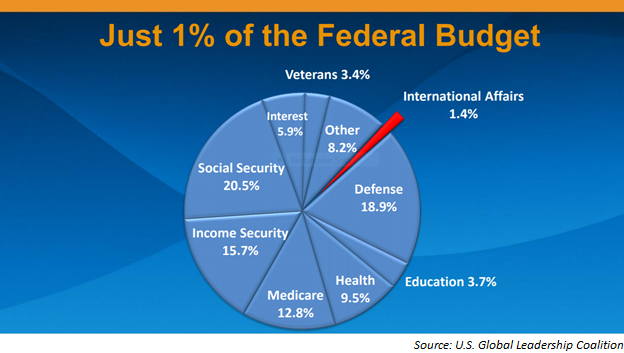
U.S. Foreign Aid: Dispelling the Myths
In Tajikistan, Mahkfirat Saidrahmonova is showing other women in her community what it takes to successfully run subsistence farms thanks to a program called Feed the Future.
In Afghanistan, a challenging but rewarding internship program is providing Sayeda Korga with job skills that will give her independence and economic security as part of a program called Promote: Women in Government.
In more than 80 countries around the world, a network of projects on behalf of women and girls is promoting policies to ensure greater gender equality and empowerment.
Do these projects sound familiar? They should, as they are similar to the work that Dining for Women and its members support every month. But these are not programs supported by nonprofits like DFW and its grantees; rather, they are supported through a variety of government agencies and are part of what is commonly called foreign aid or foreign assistance.
What is U.S. foreign aid?
Foreign aid is a broad term that covers the many types of assistance that the U.S. gives to other countries. For example, foreign aid is used to fight terrorism and the illicit drug trade, provide disaster relief, vaccines, education and clean water, and stimulate economic development.
Why does the U.S. give aid to countries?
The purpose of U.S. foreign aid has changed over the decades since the modern-day concept of development assistance took shape with the Marshall Plan after World War II. The Marshall Plan provided financial and technical assistance to Europe to rebuild its infrastructure and economy and stabilize the region following the war.
In the sixties, our priority was creating markets for our products and fighting communism by reducing poverty. This time period became known as the “decade of development” with the creation of the U.S. Agency for International Development and the Peace Corps. In the seventies, our aid focused on basic human needs, and in the eighties, it turned to improving free markets.
Today, the U.S. gives aid to countries for many reasons, including:
- National Security – Aid can support efforts to reduce poverty and injustice, which fuel social tensions and destabilize countries.
- Economic Interests – Aid can generate demand for U.S. goods and services and help build stable trading partners.
- Goodwill – Providing aid can help advance human rights and democracy and demonstrate the goodwill of the American people.
How much does the U.S. spend on foreign aid?
What do you think? If you are like the majority of Americans, you probably overestimate how much money the U.S. government spends on foreign aid. One of the greatest myths is that the U.S. spends as much as 30 percent of the federal budget on foreign aid to poor countries. This is absolutely untrue.
The entire international affairs budget,
which includes both diplomacy and development,
is only about 1 percent of the total federal budget.
And only half of that is poverty-reducing foreign aid.
In terms of absolute dollars, the U.S. is the largest development aid donor in the world, investing $33.59 billion in official development assistance in 2016. (Source: Organisation for Economic Co-operation and Development, or OECD) However, when you look at this contribution as a percentage of gross national income, the U.S. is in 20th place, behind Canada, the United Kingdom, and the top contributor, Sweden. Click here to see the full country list.
The U.S. currently spends nearly 50% less on foreign assistance today as a percentage of GDP than during the Reagan years from 1981-1989. (Source: U.S. Global Leadership Coalition)
Has U.S. foreign aid been effective?
According to the U.S. Global Leadership Coalition, U.S. development and humanitarian programs save lives. Millions of people are alive today thanks to U.S. assistance to fight HIV/AIDs, malaria, and hunger. Here are a few impressive results:
- Over the last 25 years, U.S. aid has helped cut extreme poverty in half around the world.
- The President’s Emergency Plan for AIDS Relief (PEPFAR) alone has saved more than 11 million lives and prevented nearly 2 million babies from being born with HIV.
- The world has seen a 99% reduction in polio cases, thanks to U.S. supported global vaccination programs.
Why should DFW members care about U.S. foreign aid?
The needs of the world’s poorest women and girls are too great for any one government or nonprofit to address. We at DFW are doing our part. Thanks to our generous and committed members, DFW will contribute more than $1 million to grassroots organizations this year. We have invested nearly $6 million since our inception – something that should make us all very proud.
DFW believes that the U.S. government must continue to do its part to end illiteracy, poor health care, violence, gender inequality, and lack of opportunity for women and girls. To eradicate poverty and achieve gender equity worldwide, we need to have a multi-pronged effort that includes both private charitable donations, like those given generously by our DFW members, and foreign assistance provided by the U.S. government.
The future of U.S. foreign aid, however, is uncertain as our elected representatives in Washington, D.C. grapple with a budget for the next fiscal year. In the coming months, we will talk about the U.S. international affairs budget, how it benefits women and girls around the world, and the potential impact of budget cuts.
